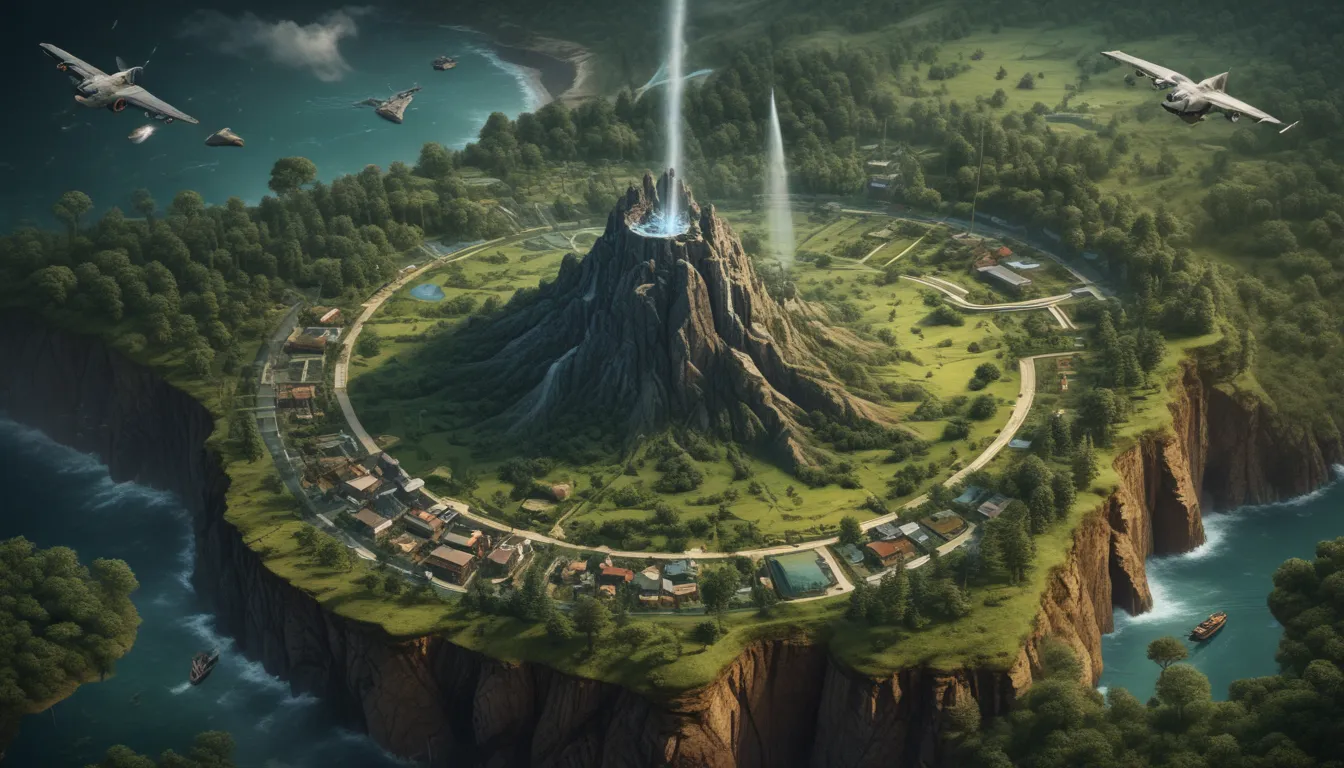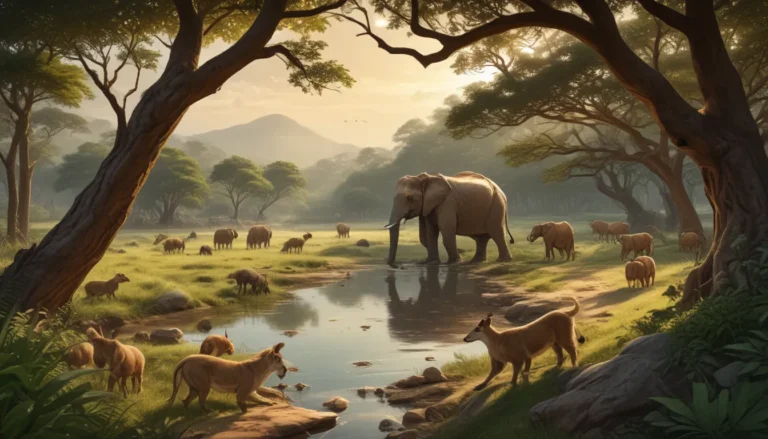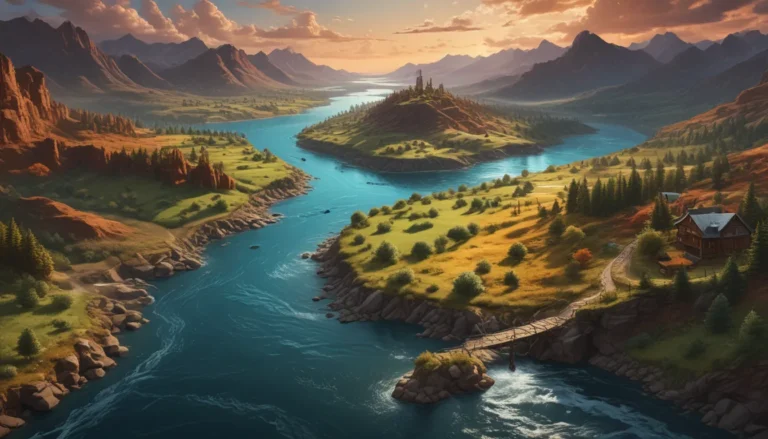A Note About Images: The images used in our articles are for illustration purposes only and may not exactly match the content. They are meant to engage readers, but the text should be relied upon for accurate information.
Welcome to the captivating realm of remote sensing, a cutting-edge field that has revolutionized the way we perceive and interpret our planet and beyond. Through the ingenious deployment of satellite imagery and other advanced technologies, remote sensing empowers us to observe and scrutinize the Earth’s surface from a distance, unveiling a plethora of invaluable insights. From monitoring weather patterns to studying environmental shifts and even delving into the realms of distant planets, remote sensing stands as a pivotal tool with a breadth of applications that shape our understanding of the world we inhabit. Embark on a journey as we unravel 11 extraordinary facts about remote sensing that will not only intrigue you but also underscore the significance of this technology in our daily lives. Brace yourself for an enlightening exploration into the realm of remote sensing as never experienced before!
Delving into the World of Remote Sensing
Remote sensing employs an array of cutting-edge technologies such as satellites, drones, and aircraft to capture awe-inspiring images of Earth from above. This innovative approach offers us a unique vantage point, enabling us to gain profound insights into our planet’s land, water, and atmosphere with unparalleled detail and precision.
Glimpsing Environmental Transformations
At the heart of remote sensing lies its pivotal role in monitoring and comprehending environmental changes that unfold before our eyes. From deforestation and urbanization to climate patterns and natural calamities, remote sensing serves as a vital tool in deciphering these transformations. By leveraging remote sensing data, scientists can deepen their understanding of these shifts and devise strategies for conservation and mitigation, safeguarding our planet for future generations.
Nurturing Sustainable Agriculture and Food Security
The realm of agriculture reaps immense benefits from remote sensing, empowering farmers and agricultural experts to track crop health, soil moisture, and nutrient levels with unparalleled precision. This invaluable data paves the way for enhanced farming practices, fostering increased crop yields and bolstering food security on a global scale.
Orchestrating Water Resource Management
Remote sensing emerges as a linchpin in the meticulous assessment and management of water resources. By monitoring water levels in rivers, lakes, and reservoirs, as well as tracking subterranean water storage, remote sensing aids in strategic planning for irrigation, flood control, and optimal water supply management strategies.
Steering Disaster Management Efforts
In times of natural disasters like hurricanes, earthquakes, and wildfires, the real-time information provided by remote sensing proves instrumental in gauging the extent of devastation. This data equips emergency responders and relief organizations with crucial insights to streamline their efforts and allocate resources effectively, mitigating the impact of calamities.
Illuminating Climate Change Studies
The wealth of remote sensing data serves as a cornerstone in unraveling the intricacies of Earth’s climate system. From tracking temperature variations and monitoring sea ice extent to measuring carbon dioxide levels, remote sensing provides indispensable information for climate research and policy formulation, shaping our response to pressing environmental challenges.
Navigating Urban Planning and Development
The realm of urban planning benefits immensely from remote sensing data, aiding policymakers and urban planners in making informed decisions about city expansion, transportation systems, and resource allocation. This invaluable insight underpins sustainable urban development practices that harmonize growth with environmental conservation.
Mapping the World with Precision
Remote sensing emerges as a quintessential tool for crafting detailed and accurate maps. By capturing and analyzing data on elevation, land cover, and terrain, remote sensing fuels the creation of navigation systems, spatial analysis tools, and geographic information systems, underpinning a myriad of applications that facilitate seamless navigation and informed decision-making.
Unveiling Natural Resource Treasures
The realm of natural resource exploration witnesses a paradigm shift with the application of remote sensing techniques. Geologists and exploration companies leverage these technologies to pinpoint potential mineral deposits, oil and gas reserves, and groundwater sources, fostering efficient and sustainable extraction practices.
Safeguarding Wildlife and Habitats
Remote sensing casts a protective shield over ecosystems and wildlife habitats, empowering scientists to monitor and safeguard endangered species, track migration patterns, and assess human-induced impacts on biodiversity. This invaluable insight is instrumental in conserving our planet’s rich tapestry of life forms.
Preserving Archaeological Heritage
In the realm of archaeology and cultural heritage preservation, remote sensing unveils a treasure trove of ancient ruins, buried sites, and cultural artifacts without disturbing their physical integrity. This revolutionary approach aids in preserving our cultural legacy while shedding light on the secrets of past civilizations.
Embarking on a Journey of Discovery
Remote sensing stands as a revolutionary force that has redefined our perception and analysis of the Earth. With its unique ability to capture data from a distance, remote sensing unveils a tapestry of insights into various facets of our planet, from monitoring land use changes to predicting weather patterns and managing natural disasters.
As our proficiency in remote sensing continues to evolve, so does its potential to address critical global challenges such as climate change, food security, and urban planning. With advancements in satellite technology, data processing algorithms, and machine learning, remote sensing is poised to play an even more pivotal role in shaping the future of our planet.
By harnessing the potential of remote sensing, we unlock a wealth of knowledge about our world, enabling informed decision-making, resource management, and environmental conservation initiatives. The extraordinary facts about remote sensing showcased in this exploration are but a glimpse of the wonders this technology can achieve. As we venture deeper into the possibilities of remote sensing, we anticipate a realm of exciting advancements and discoveries on the horizon.
Unveiling the World of Remote Sensing: FAQs
-
What is remote sensing?
Remote sensing involves collecting data about the Earth’s surface using sensors mounted on satellites, aircraft, or other platforms. It captures images and measures various wavelengths of electromagnetic radiation to glean insights into the environment. -
How is remote sensing used?
Remote sensing finds application in diverse fields such as agriculture, forestry, urban planning, environmental monitoring, and disaster management. It aids in mapping land cover, assessing vegetation health, monitoring water quality, and identifying potential natural hazards. -
How does remote sensing work?
Remote sensing operates by detecting and measuring the electromagnetic radiation emitted or reflected by objects on the Earth’s surface. Sensors on satellites capture this radiation, processing it into images and data for analysis and interpretation. -
What are some examples of remote sensing technologies?
Aerial photography, multispectral imaging, thermal infrared sensors, radar systems, and LiDAR are examples of remote sensing technologies. Each technology boasts unique strengths and limitations, enabling a wide variety of applications. -
What are the benefits of remote sensing?
Remote sensing offers a cost-effective means of gathering data over expansive areas at regular intervals. It facilitates monitoring environmental changes, identifying potential risks, assessing human impacts on the planet, and informing decisions about resource management, planning, and conservation. -
What are the future prospects of remote sensing?
The future of remote sensing shines brightly, with advancements in technology like higher-resolution sensors and improved data processing algorithms. Integration with artificial intelligence and machine learning is set to enhance our capacity to derive meaningful insights from remote sensing data, opening new avenues of exploration and discovery.
A Legacy of Trustworthy Content
At the core of our mission lies a steadfast commitment to delivering engaging and credible content that resonates with readers from all walks of life. Each piece of information on our platform is a product of contributions from real users like you, enriching our repository with diverse insights and perspectives. Our dedicated editors rigorously review each submission, ensuring that the facts we present are not just captivating but also reliable. Trust in our unwavering dedication to quality and authenticity as you delve into the realm of knowledge and discovery with us.






